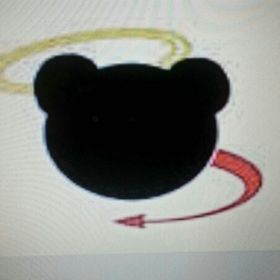Fidget spinners burst on the scene this spring and we saw them everywhere–in classes, at restaurants, you name it. We figured they would start showing up in consignments our customers bring to us. But you won’t see them sold here.
Fidget Spinners and Choking Hazards

We decided early on that we won’t sell spinners. To us, they look a lot like a choking hazard, and that’s one of our biggest concerns. Sadly, it turns out that this has already happened and not to a toddler, but to an older child.
According to Good Housekeeping, a ten-year-old who was “cleaning” her spinner toy in her mouth accidentally ingested one of the ball bearings that make them spin. She was able to communicate what happened to her mother, who took her to an ER. She had emergency surgery to remove it from her esophagus.
Later, the mom posted about the episode on Facebook.
Should a ten-year-old know better? Well, kids are impulsive. Some spinners are marketed to help kids with Attention Deficit Disorder (ADD) maintain their focus, a group that’s already at-risk for injury. (There’s no evidence that they help with ADD—more on that below.)
Good Housekeeping examined several fidget spinners. They found many broke apart quite easily into pieces small enough to be classified as a choking hazard for young children.
Some Fidget Spinners Contain High Amounts of Hazardous Materials
It caught my eye when I came across a few articles that mentioned many of these fidget spinners are made in China.
Considering how quickly they flooded the market, I wasn’t surprised to read this. Then I began to wonder about lead hazards. I closely follow recalls on kids’ items and I can tell you many recalls are for Chinese-manufactured products with excessive amounts of lead. In the past, Chinese manufacturers have also exported contaminated dog food and children’s medicine.
I found news reports about high levels of lead and mercury in fidget spinners. Probably the most reliable one comes from Tamara Rubin, an environmentalist and lead abatement crusader. Rubin recently ran tests on several spinners and learned they come apart quite easily (as Good Housekeeping found) and contain high amounts of lead as well as mercury in their paint.
Worse, the ones with batteries to make them light up are powered by tiny, button batteries that can fall out if they aren’t secured with the right size screw and nut. Button batteries can be deadly if swallowed.
At AZ Kidz n More, we take extra care inspecting toys and books that run on batteries, particularly small batteries. We check to make sure they still work, aren’t leaking, and are held securely in place. If we spot a problem, we return the item to the consigner and let them know about the hazard.
No Evidence that Fidget Spinners Help Kids with ADD
As I mentioned above, some spinners are marketed for kids with ADD with claims that they can improve focus. Unfortunately, there’s no actual research to back this up. Making a claim without any evidence amounts to lying—to kids with ADD and their parents.
Scott Kollins, Ph.D., of the Duke Institute for Brain Sciences, told NPR that spinners are basically the latest toy that says it can help people with ADD. “There’s basically no scientific evidence that those things work across the board,” he says.
Many schools have banned fidget spinners. Teachers and students complain that the whizzing sound is distracting to non-spinners, and some schools have reported that they become just another toy with hard parts kids will throw at one another.
What can parents with ADD kids do to help them? I like the ADDitude Magazine website. It discusses assistive technologies and strategies rather than cheaply-made and possibly dangerous toys.
Do you have a kid with ADD? What has been your experience with fidget spanners? Email me with your thoughts.


Leave a Reply